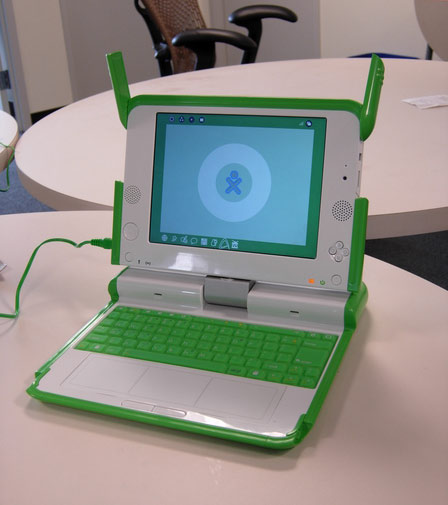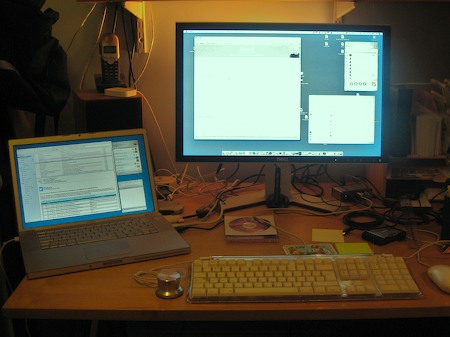Duncan Goldie-Scot pointed me at John C. Dvorak’s article: The $100 Laptop: What went wrong? Anyone familiar with JCD will recognise that the dismissive past tense for a project that is just warming up is simply part of his normal marketing style. He raises some good questions, though…
…I myself have moaned about the details of this One Laptop Per Child scheme as folly or idealistic. The basic argument is that with $100 you could almost feed a village for a year, so why waste that sum on a laptop? What are they thinking?
But Zachary has a more profound point: “The fact that these people need electricity more than they need a laptop is only part of the problem,” he says. “The real problem is lost mind share. The people are harmed because these sorts of schemes are sopping up mind-share time of the people who might be doing something actually useful.”
To summarize, there are only so many hours in the day, and we should not be wasting them on this kind of naïve feel-good showboating. Let’s face it: These high-tech gems are a laughable addition to a mud hut.
Classic Dvorak. (I’m very skeptical, in passing, about $100 being enough to feed a village for a year. I read a report on OLPC recently which said that average governmental spending in the countries concerned is around $200/head, so $100 spread over the laptop’s expected 5-year life sounds much more reasonable.)
However, I also don’t buy his larger argument, for various reasons.
The first is that different people are inspired to make the world a better place in different ways, and resources, innovation and people can’t be shuffled from project to project in quite such a simple fashion – inspiration is not subject to the rules of double-entry bookkeeping. Besides, this is an old story: In the seventies the big argument was that we shouldn’t be making weapons when there were people needing ploughshares. Today, people like me probably shouldn’t pay a premium for organic food when there are others going hungry in Africa. These are both true, but they are pie-in-the-sky arguments because nothing is that simple in reality. If my hotel decided not to have such a nice carpet in its lobby, would that mean that there were fewer homeless people on the streets? Of course not. And if the OLPC project weren’t there it doesn’t mean that the resources that RedHat, say, are putting into it would automatically be diverted to water purification.
The second is that it can be rather too easy for the wealthy part of the world to decide the priorities for the less wealthy part. Perhaps the best example that I’ve come across in my work is the spread of mobile phones. Did you know that over a third of the world’s population have a mobile phone now? The number is growing by more than a million users per day, and it will be less than five years before half the world have cellphones. “Why on earth”, we might have asked ten years ago, “would somebody in an African village with a poor water and electricity supply want a mobile phone?” But that’s because we take for granted things like the ability to travel, or the reliability of postal services, and forget that the simple ability to transmit and receive information over a distance is incredibly empowering. Mobile phones are transforming millions of lives. We don’t know exactly how people around the world would use a PC if they had access to one, but it is one of mankind’s most sophisticated and flexible tools, and I don’t think it’s our place to deny it to others.
I have many questions about OLPC, some of which we’re trying to address at Ndiyo. I doubt that it will succeed on the scale that its founders hope. And I think there’s a good argument that, for example, Dean Kamen’s latest initiative around water purification and electricity generation is rather more important than both projects.
But I have huge admiration for people who dream a big impossible dream and work hard to make it a reality. Give me the option of a world with more well-intentioned visionaries, or a world with more armchair cynics, and I know which one I’d choose!



Recent Comments